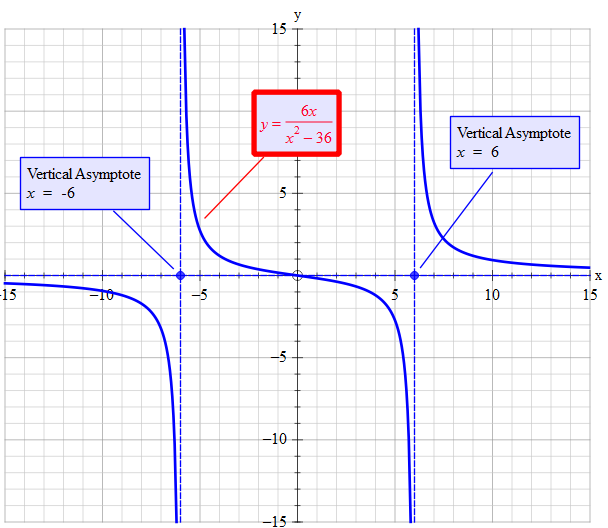How do you graph #(6x)/(x^2-36)# using asymptotes, intercepts, end behavior?
1 Answer
Vertical asymptotes at
As
As
Explanation:
Let a minute amount of
I have deliberately used this symbol as in introduction to calculus without actually using calculus
Set to
Notice that the denominator is the difference of two squares. So we have:
Note that the use of
~~~~~~~~~~~~~~~~~~~~~~~~~~~~~~~~~~~~~
This becomes 'undefined if the denominator is zero thus we have vertical asymptotes at those points.
Vertical asymptotes at
~~~~~~~~~~~~~~~~~~~~~~~~~~~~~~~~~~~~~~~~~~~
Let
Set
Now
...................................................................................................
Let
Following the same methodology of thinking we find that in this case the denominator is only just smaller than 0 so when divide into the numerator the whole is tending to
~~~~~~~~~~~~~~~~~~~~~~~~~~~~~~~~~~~~~~~~~~~~~~
As in the processes above:
When
When
~~~~~~~~~~~~~~~~~~~~~~~~~~~~~~~~~~~~~~~~~~~~~~~~~~~~
As
The net consequence is that
For
For


